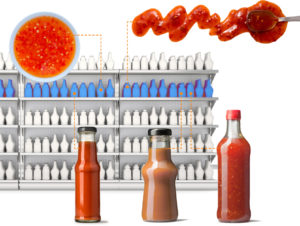From Concept to Execution
 Retailers and brands often find themselves faced with the question of whether a particular trend has lasting potential that’s worth investing in or if it’s a fad that may be here today and gone tomorrow. But to stay competitive in today’s environment, it’s no longer possible to ignore all trends and simply rely on “old standbys.” That’s especially true for retailer’s private brands, which consumers are increasingly looking to for differentiation.
Retailers and brands often find themselves faced with the question of whether a particular trend has lasting potential that’s worth investing in or if it’s a fad that may be here today and gone tomorrow. But to stay competitive in today’s environment, it’s no longer possible to ignore all trends and simply rely on “old standbys.” That’s especially true for retailer’s private brands, which consumers are increasingly looking to for differentiation.
So how can a retailer balance the risks vs. rewards of innovating to build on a trend? It comes down to understanding your shoppers and the influences that drive their purchasing decisions, says James Hedges, Senior Manager of Category Solutions for Daymon. And these factors must be considered at every point in the development process—from concept, to execution, to branding.
To illustrate this point, Hedges points to the growing trend of global cuisine. International flavors and new styles of cooking are popping up in restaurants everywhere, and many shoppers are getting in on the action at home through meal kits, spice blends and flavorful snacks from around the globe. This presents an opportunity for private brands to become innovative leaders by developing unique products that feed shoppers’ desire for experimentation.
But it’s not simply a matter of “if you build it, they will come.” Retailers need to begin by carefully considering what categories make the most sense to innovate in for their consumers. For many traditional grocers, Hedges says cooking sauces and marinades provide the ideal opportunity to introduce shoppers to new flavors. “This taps into shoppers’ growing demand for convenience,” he explains. “Sauces and marinades are easy to use and they make meal prep simpler—just add them to your protein or vegetables or rice and you have an authentic meal, without all the work of cooking from scratch.”
Health and wellness is another key purchase driver that retailers can capitalize on in their approach to innovation. “The demand for more ‘natural’ products with simpler ingredients is greater than ever. Infusing marinades and sauces with superfoods or spices with health-related properties can offer consumers a way to create ‘better-for-you’ meals, while also experiencing new flavors and cuisines,” says Hedges.
Packaging format and design are also important considerations in developing a successful product. “Retailers should consider flexible packaging and smaller serving sizes,” says Hedges. “Both allow for superior freshness protection and reduce food waste—something shoppers are looking for today. Single-use tear-and-dispense pouches could also be a large area of opportunity to encourage trial.”
On-shelf marketing—in the form of serving ideas and recipes highlighted adjacent to the products—can also encourage trial and adoption. “Playing up the idea of versatility—such as the ability to use marinades for dipping or pasta sauces that are suitable for other dishes such as red meat, poultry and seafood—adds value to the product and reduces concerns about food waste,” explains Hedges. “Cross merchandising placement with perimeter departments can also be very successful.”
Developing this kind of comprehensive and thoughtful approach to innovation in private brand can help ensure the risk of being on the leading edge of a trend ultimately pays off.
To learn more about private brand product development and branding, contact James Hedges or Tracy DeCarlo, Senior Managers of Category Solutions for Daymon, at jhedges@daymon.com or tdecarlo@daymon.com.

